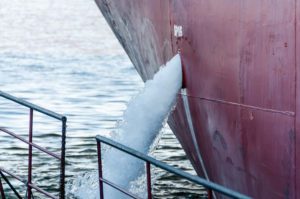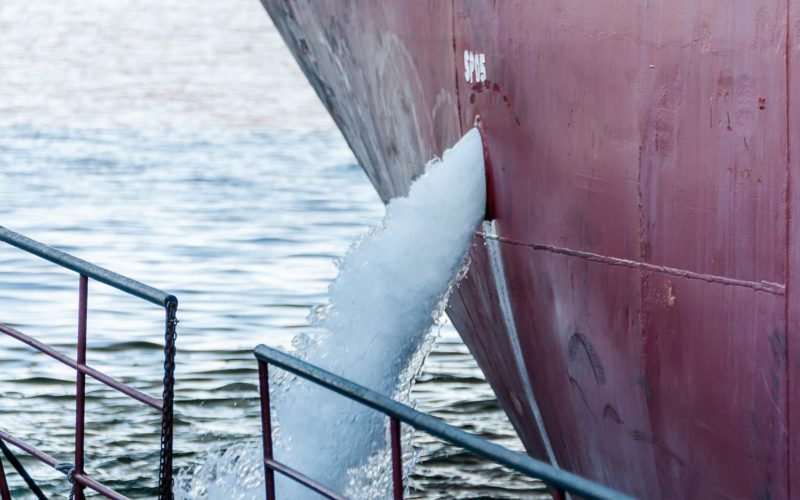(WASHINGTON and LONDON) — The U.S. Environmental Protection Agency (EPA) has indicated that new federal discharge standards for vessels will be published in autumn 2024, some four years after its original deadline, according to a new report from Gard.
In the meantime, the agency has seemingly strengthened its inspection and enforcement efforts to ensure compliance with the extended Vessel General Permit (VGP) scheme and warns that noncompliance can result in significant penalties.
Regulatory timeline
The Vessel Incidental Discharge Act (VIDA) was signed into U.S. law in December 2018, intending to replace the VGP scheme and streamline the patchwork of federal, state and local requirements for the commercial vessel community. VIDA gave the EPA two years to develop new national discharge standards for vessels and the U.S. Coast Guard another two years to develop regulations and best management practices to implement and enforce those standards.
VIDA also specifies that the provisions of the 2013 VGP will continue to apply until EPA and the Coast Guard publish their final regulations, regardless of how long that takes, and that the permit cannot be modified during that time.
While the EPA did issue a notice of proposed rulemaking in October 2020, a final rule on new discharge standards has still not been promulgated – which also means that a complete replacement scheme for the VGP is still some time away. A recent announcement on the EPA website indicates that a final rule on the discharge standards may be ready in the autumn 2024. Thus, if the Coast Guard spends the full two years to finalize the corresponding enforcement standards, the current 2013 VGP scheme will remain in force until 2026.

Is the EPA strengthening its VGP enforcement efforts?
The delayed implementation of new federal discharge standards in the U.S. does not mean leniency and lack of commitment by the EPA. On the contrary, the agency seems to have strengthened its inspection and enforcement efforts to ensure compliance with the extended VGP scheme and warns that noncompliance can result in significant penalties.
Not long ago, a Gard member was notified by the EPA that three of its vessels had violated the inspection and reporting requirements under the VGP scheme. The EPA claimed that the named vessels had not completed their annual reports nor recorded noncompliances and corrective actions as required in order to maintain their permits. While the consequence for our member in this particular case is not yet clear, Gard is aware that significant financial penalties have been issued in the recent past for similar violations of the VGP scheme.
For instance, in November 2021 the EPA announced that it had levied penalties totaling $81,474 against two commercial ships over VGP inspection, monitoring and reporting violations. A containership was fined $66,474 for failing to conduct routine visual inspections and submit timely annual reports during the period 2016 through 2019. Similarly, penalties totaling $15,000 were levied against a bulk carrier that had failed to perform monthly functionality monitoring and an annual calibration of the ballast water treatment system before discharging ballast water into VGP waters, and to conduct the required biological monitoring of samples taken during the discharge.
Vessels that do not comply with their discharge permits can have significant environmental impacts on U.S. waterways, according to the EPA, and added that because VGP compliance relies on self-inspection and reporting, violations of this kind are considered to undermine the VGP program and are therefore taken very seriously.
Easy to follow procedures are key to VGP compliance
Generally speaking, penalties arising from noncompliance with regulations like the VGP scheme are not covered under a ship’s P&I insurance. However, Gard takes this opportunity to warn ship operators of what seems to be a shift in how the EPA enforces the VGP requirements, with more frequent and in-depth investigations, and larger penalties for noncompliance.
Vessel operators trading to the U.S. are therefore advised to review their VGP compliance programs and deal with any weaknesses that may exist. Under the VGP scheme, ship operators and masters are required to self-assess and self-report, which is somewhat different from the traditional port state control regimes where an inspector comes on board to verify regulatory compliance. It is therefore important that procedures for conducting the required routine and annual inspections, as well as completing the required monitoring and sampling, are available on board and easy for crews to follow.
Onboard procedures must also stress the importance of documenting when there is noncompliance and the corrective actions taken. By not reporting a noncompliance, ship operators will effectively double their noncompliance status. First there is the initial incident of not complying with requirements, and in addition, there is the failure to report that noncompliance.
And don’t forget that annual reports, including monitoring data, for a given calendar year must be submitted to the EPA no later than Feb. 28 of the following year.
Commercial vessel discharge standards in the U.S. – connecting the dots
The basic structure for regulating discharges of pollutants into U.S. waters is set out in the Clean Water Act (CWA) of 1972. The CWA makes it unlawful to discharge any pollutant from a point source into U.S. waters unless a permit is obtained. The definition of point sources also include vessels and other floating crafts from which pollutants are or may be discharged.
The different discharges are controlled under the EPA National Pollutant Discharge Elimination System (NPDES) permit program. NPDES permits contain limits on what you can discharge, monitoring and reporting requirements, and other provisions to ensure that the discharge does not harm water quality or people’s health.
The Vessel General Permit has since 2008 provided NPDES permit coverage nationwide for discharges incidental to the normal operation of commercial vessels more than 79 feet in length. The current version of the permit, the 2013 VGP, was originally set to expire in 2018 – but then came VIDA.
VIDA amends the CWA and restructures how the EPA and the Coast Guard regulate incidental discharges from commercial vessels into U.S. waters. Specifically, VIDA gives the EPA responsibility for establishing standards for the discharge of pollutants from vessels and the Coast Guard responsibility for prescribing, administering, and enforcing the standards. While this has become a lengthy formal regulatory process that may not be completed until 2026, the following interim requirements continue to apply until the regulations are finalized:
• For large commercial vessels (≥ 79 feet in length), except fishing vessels: The existing vessel discharge requirements established through the 2013 VGP and the Coast Guard ballast water regulations, and any applicable state and local government requirements.
• For small vessels (<79 feet in length) and fishing vessels of any size: The existing discharge requirements for ballast water only established through the 2013 VGP and the Coast Guard ballast water regulations, and any applicable state and local government requirements.
– Gard

